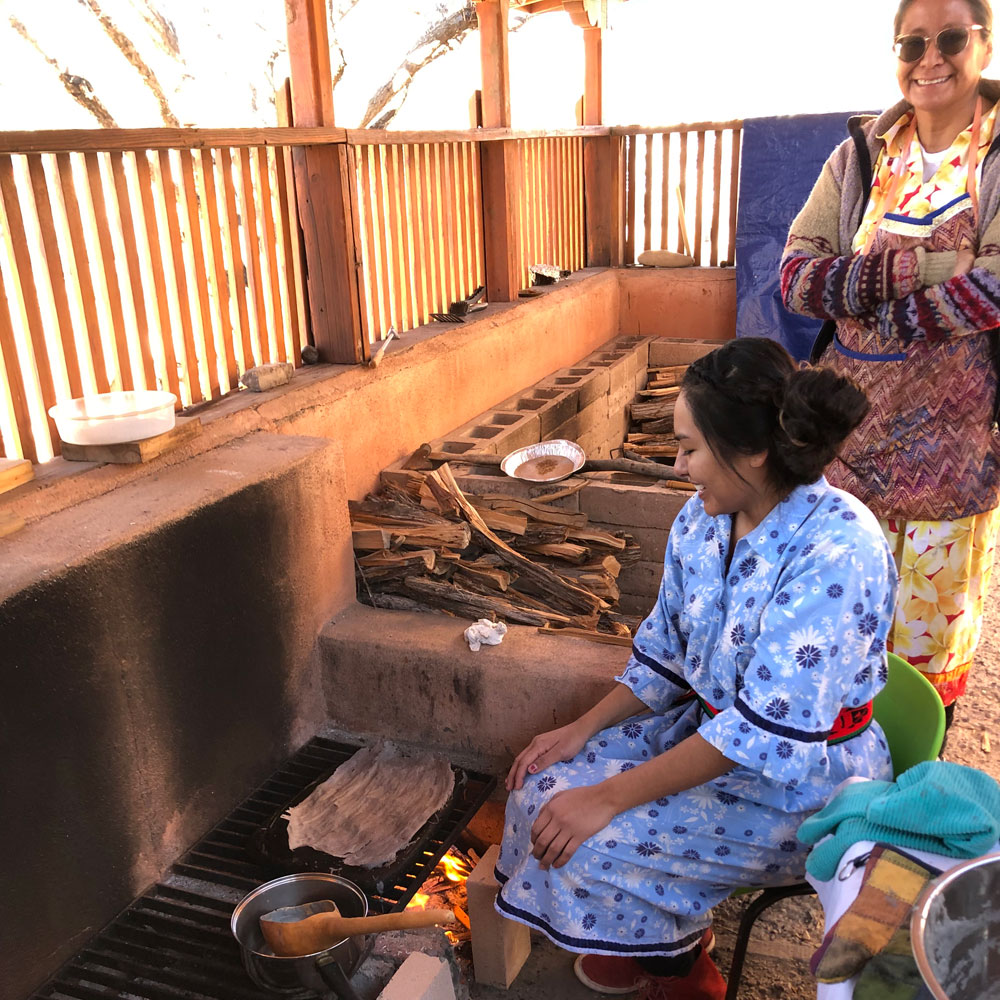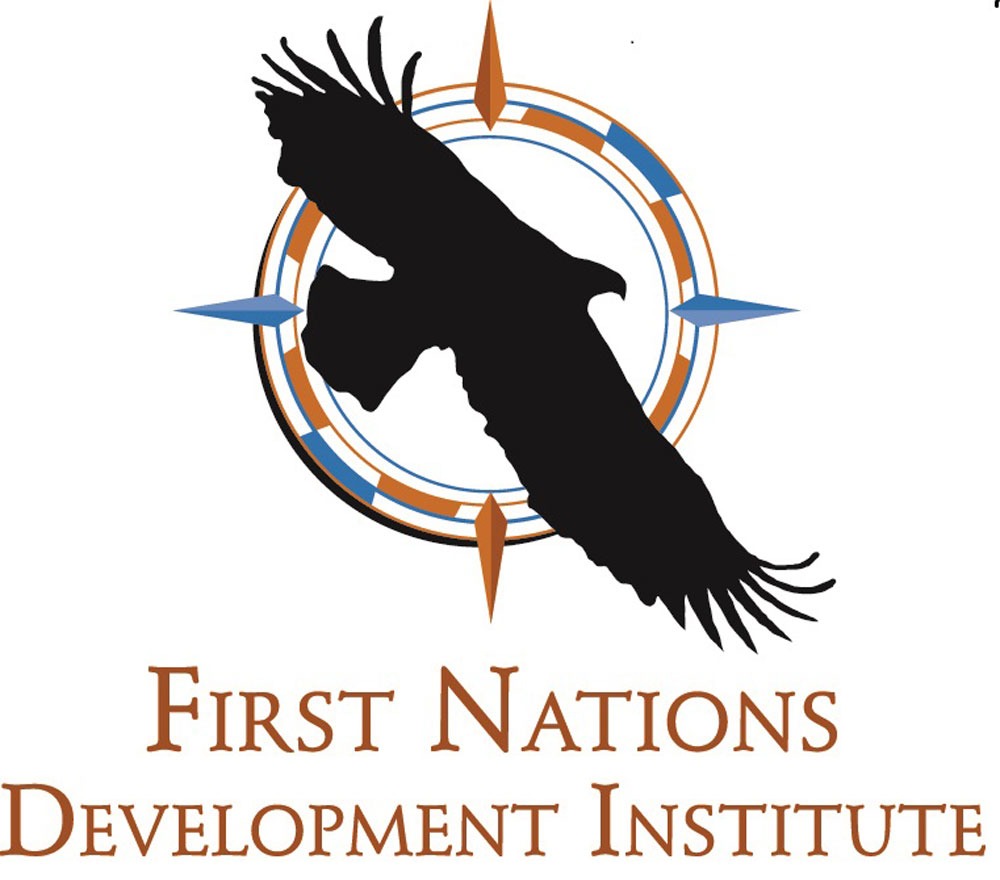
This article is the fifth in a series of articles published by NPQ, in partnership with the First Nations Development Institute (First Nations), that lift up Native American voices to highlight issues concerning environmental justice in Indian Country and identify ways that philanthropy might more effectively support this work.

The tendency for philanthropy to act in silos severs the connections between land and food, food and people, and health and environmental balance. It is past time for environmental justice-oriented philanthropy and public policy work with indigenous nations to develop more holistic approaches that restore food systems while caring for land, the people, and the environment.
For the Cochiti Pueblo, food is central to our culture, community, and who we are as a people and as individuals. When our lands suffer from environmental damage, pollution, or a shift in the climate, we can feel the changes in our bodies and in our health. As a result, we respond through practice to our understandings of our world, stewardship of the environment around us, and adjust while adding to the collective memory we pass on to the next generation of Cochiti people.
In present times, the cycle of call and response with our environment has been disrupted through lack of access to our traditional homelands, disregard for Indigenous stewardship practices, and Western ideas of nature being separate from human community. Consequently, when our environment calls loudly like in times of a pandemic, we humble ourselves to listen and respond to the call with equal vigor.
Western society doesn’t easily comprehend how disconnection from our foods creates a disconnect from our lands. The result is unhealthy land and unhealthy people.
Less apparent is that the environment is more complicated than commodity yield, the carbon count, the soil health, and water quality; it’s an amorphous process of all those things plus the symbiotic relationships created through interaction of parts and people. Complicated, yet understandable through story.
While eating our traditional foods, we often tell stories of hunting deer, gathering wild spinach and onions, or the last piñon harvest—not as a nostalgic mourning because those very activities are becoming increasingly difficult, but because our children need to remember and understand the lands that made us. Our stories speak more of science, longstanding relationships between the world and the organisms that make up that world. Story itself is a tribute of respect to our homelands, accepting our environment as a whole.
As children, we are taught what foods are appropriate for specific times of the year and for specific dances. During these community gatherings and dances, we often feed people by the hundreds. The corn harvested from the previous fall lasts the year, so during the cold winter months we have stews to put on the table. We have perfected feeding people. Ideally, we build kitchens with enough room to hold large tables. We value large pots that can hold gallons of stew. We know which wood burns longer and hotter. We time outdoor cooking based on the season and temperature outside.
The food we place on the table once came solely from game, from gathering, and from our own fields. Each dish has a story centered on interaction between the person and our homelands. It reminds us of our connection and our beginnings. Food is the umbilical cord that ensures community and people are nourished by our motherlands and, in turn, we nourish her.
As our environment has changed over time, so has our food. Those missing pieces, those parts of our environment which are no longer available to us, have been replaced with unworthy substitutes purchased in grocery stores or given as government commodities. But we continue to feed each other. We continue to dance.
Yet, a shift happens. We undoubtedly adjust, but we become less accustomed to our own homelands, less aware of the changing environmental conditions, more vulnerable to retail market volatility. In turn, we become more like reflections of mainstream food systems—less reflections of our motherlands and less able to respond to her. When the communication between our environment and people breaks down, so does society. One need only to reflect on our current pandemic to see that breakdown.
Our stories about our foods are stories about the timelines, durability, and resilience of our environments. During Christmastime, during the most public of dances, visitors witness the Buffalo dance and can see a plaza filled with adults dancing as buffalo and with small children dancing as deer, mountain ram, and antelope, mimicking animals that have long since been absent from our environment but reflect a harmonized ecosystem, as in a dance that lasts centuries. Far too often, our stories are relegated into anthropological or cultural categories and dismissed by “hard science” rather than captured for what they are: reminding us what a balanced environment looks like and how human community should strive for that balanced—literally—dance.
For example, we often see Indigenous stories challenged or followed with archeological or anthropological evidence as a way of accreditation or discreditation, as if our stories were not in and of themselves truths, with lessons and guidance for paths forward. Too rarely are we as Indigenous people respected by those outside our nation as knowledge holders, environmental stewards, and caretakers of our own lands and our own people. In turn, as Indigenous people we find ourselves defending our stories or trying to prove our stories with scientific tools and theories that are designed to exclude Indigenous knowledge from their initial design.
It’s no wonder the current reaction to the pandemic from the Indigenous community has been a call for return to traditional stories and fortitude, while the mainstream community has been one of further isolation. In the Indigenous community, there is no question that we must protect our elders, who are our knowledge-keepers, while the mainstream conversation is more focused on their economic value and contribution. Even the hardest-hit Indigenous communities have leaned further into their tribal membership for reprieve, response, and reaction, while those same tribal members hold outside government accountable for financial resources.
Philanthropy further aggravates this schism when it requires Indigenous people to seek funding by category, like scientific research or cultural programming, environmental justice or food culture, or to justify the worth of their knowledge—or, even more sickeningly, the worth of their community/people—instead of allowing practitioners to present their whole selves in applications, in projects, in programming, and ultimately, in the results of those efforts.
In US history, there were well-documented military strategies to utilize food as a tool for subjugation and assimilation—not just for American Indians, but also other immigrants to the United States, with the greatest impact on populations that have been disconnected from land, such as through forced relocation, limited movement through reservation boundaries, and traditional hunting/gathering land deprivation.
While the direct assimilation policies of that historical era have ceased, the tactics of deprivation continue and are even celebrated. One needs only to look at the arguments and impacts of land loss presented for places like Bears Ears National Monument in the Southwest; the long-ongoing conflict at Oak Flats in Arizona; the fight for clean water and land in Standing Rock, North Dakota; the proposed creation of a national park at Bandelier National Park; the proposed gravel pit at Juristic in Gilroy, California…the list goes on.
Or, one can look at the lack of current government and philanthropic response to the Hopi and Navajo, among the hardest hit communities in this pandemic. While not outwardly labeled “assimilation” and “relocation,” the severance of people from sacred homelands results in much of the same outcomes: unhealthy people and unhealthy land, with heavy consequences on all of society.
The compartmentalization of these issues, intentional or otherwise, relegated to environmental justice, severs the connections between land and food, food and people, and health and environmental balance. As a result, the anointed “expert” pool on each of these specific issues is smaller, disjointed, and limits those in the real conversations, too often leaving Indigenous people, who have the most stake in our environments, out of the very heart of any conversation.
Numerous Indigenous people have made major headway into many of the issue-specific conversations, whether because of stamina, self-motivation, anger, or wherewithal to achieve professional and educational authority. While we celebrate their achievements, we should also be questioning the function and organization of fragmented conversations that have issue-bound prerequisites in the first place.
Indigenous approaches and practices in land, food, health, art, economics, science, and spirituality may all stem from a place centered in a specific homeland, but the connections, emotions, and attachments described in our stories are universally human. And it is humans who have to reconnect to the lands, dirt, earth, and environment that have sustained us. It’s humans who have to ignite care, love, and compassion for each other and for our lands. Simultaneously, we have to shed institutional processes that hinder that development.
How do we fix this?
Food has been used a weapon of indoctrination, assimilation, and environmental destruction in the form of corporate agriculture and cultural value shifting, but it is also through our food that we can find our way back to balance and caretaking of both each other and our lands. It begins with the meal. Cochiti people have developed ways to feed large numbers of people; they require large tables and big pots, but also many seats, varying dishes, and lots of help.
Imagine an entire household and extended family over the entirety of a year all focused on ensuring the people at the table are well-fed, nourished, and welcomed. The food on the table should reflect the environment we call home, from the deer meat to the purity of corn derived from healthy soil and clean water. Our tables, our meals, and our ability to feed our own people during important and unimportant times are how we embody how well our environment is functioning. More importantly, those meals shared during our hours of greatest need truly reflect who are as a society.
Philanthropy has a unique role in translating those same measures into a usable system of evaluation. Just a fraction of one percent of philanthropic dollars go to Indigenous-controlled projects like FNDI’s Native Agriculture and Food Systems Initiative, which focuses on supporting Indigenous food systems—not because they are not happening or lacking, but because the entryway to funding reflects the compartmentalized systems meant to dismantle Indigenous practices and approaches.
We should be looking for ways to critically examine and change those systems. This includes obvious things, such as foundations seeking out and hiring Indigenous people to serve as program officers, board members, and program staff. These individuals can play a critical role as translators between philanthropy and indigenous peoples and can help foster conversations that can advance partnerships. More fundamentally, we must all lend our skillsets to develop systems of trust (not metrics) for projects that don’t easily fit into single categories like environmental justice and food sovereignty, but which in fact more often are both.
After all, metrics are an impersonal process to evaluate success and ensure money is well spent. But what if we decided to trust that Indigenous people have a knowledge-based, systemic, holistic approach to address health disparities, environmental justice, and cultural resiliency? What if we decided to “hear” their story of impact, instead of frantically trying to measure it?
But really, when was the last time we heard a story without trying to prove its truth?
The journey of bridging the gap between movements and food sovereignty and environmental justice may very well be formed in the Indigenous approaches to life and community. It is the Indigenous approach that may very well begin the new story that we will eventually share at table. So, as we say in Cochiti, Trah pa aa [we invite you to the table to eat].
https://nonprofitquarterly.org/healthy-land-healthy-food-healthy-people-a-cochiti-invitation-to-join-us-at-the-table/Bagikan Berita Ini














0 Response to "Healthy Land, Healthy Food, Healthy People: A Cochiti Invitation to Join Us at the Table - Nonprofit Quarterly"
Post a Comment